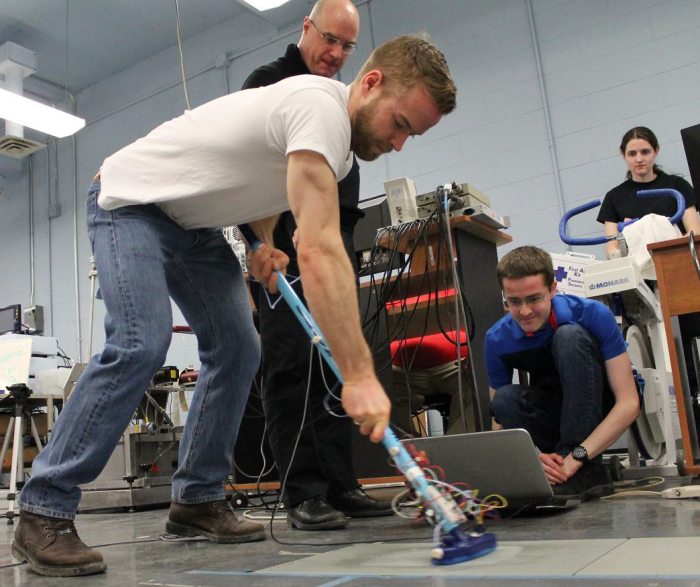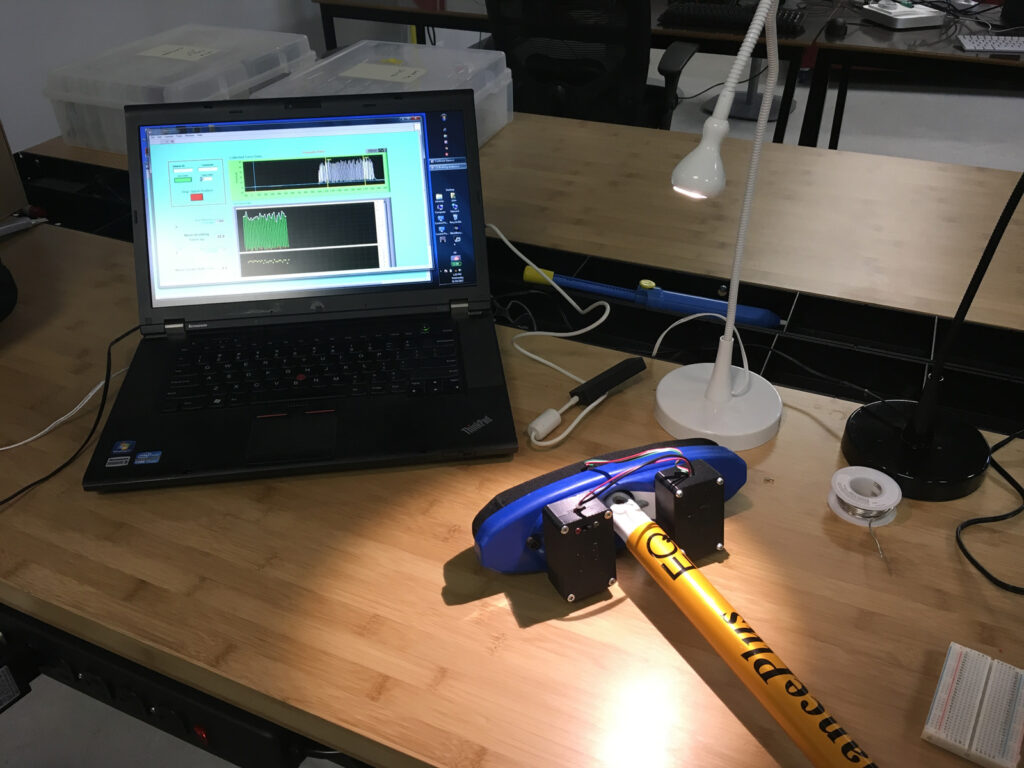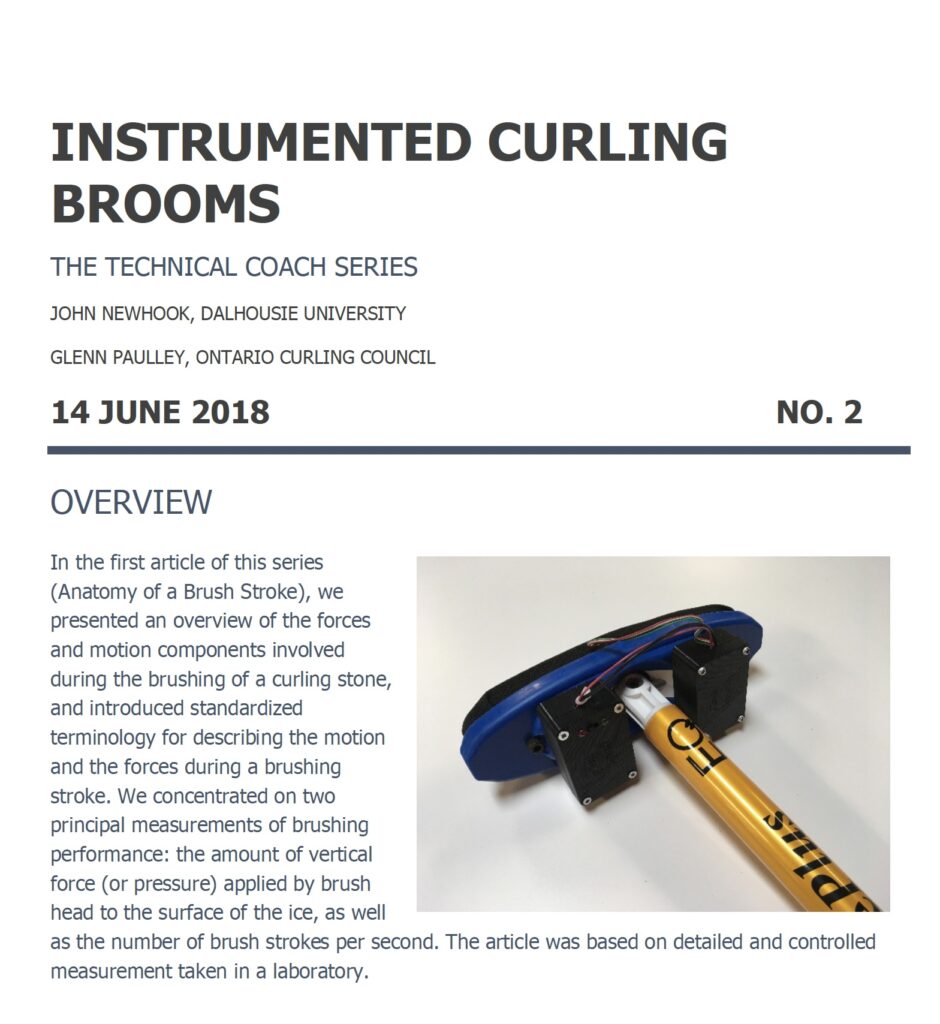I frequently receive questions about the instrumented brush that I use when testing athletes. An instrumented brush is a “game-changer” in the coaching of the sport of curling, because the effectiveness of an athlete cannot be determined statically (for example, by using a bathroom scale). Rather, brushing involves movement, and an instrumented brush is able to measure various characteristics of an athlete’s brushing profile to give essential guidance to a coach to help improve their technique.
The instrumented brush that I use is a prototype developed by Dr. John Newhook of Dalhousie University, and is described in some detail in the article shown at right. In a nutshell, the brush captures (via a strain gauge) the vertical force generated through the handle at a sampling rate of 100 Hz. The force data from the brush is transmitted to a laptop Windows computer running proprietary software that (a) converts the values from the brush into “forces” in kilograms, for better understanding by the athlete, and (b) analyzes the signal’s peaks and valleys through each stroke to determine the athlete’s stroke rate.

To ensure the brush’s accuracy we periodically calibrate the brush to a force plate in the BEN Laboratory in the School of Health and Human Performance at Dalhousie University, which is managed by Assistant Professor Dr. Michel Ladouceur and his research teams. Fortunately, we have two nearly-identical CurlSmart brushes so that we can not only compare each brush to the force plate’s output, but compare the outputs of each brush head-to-head. Once we confirm that the brushes are calibrated (typically to an error of approximately 2-3%) we can then conduct additional on-ice experiments with both brushes to establish confidence in their accuracy.


